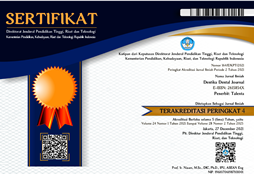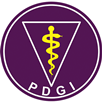Salivary Profile and Its Correlation Towards Candida Colony Count in Elderly Patients
DOI:
https://doi.org/10.32734/dentika.v26i2.13240Keywords:
Candida, Elderly, Flow Rates, Salivary, pHAbstract
Physiologically, elderly people undergo deterioration in various organ functions, such as salivary secretion and pH, which may influence their health. These alterations can lead to various problems, including Candida infections. Therefore, this study aimed to examine the relationship between salivary flow rate and pH with Candida colony counts in the oral cavity of elderly individuals. This is an analytical cross-sectional study that included 105 elderly patients visiting the Pancur Batu Health Center. Saliva was collected from each participant using the spitting method for 5 minutes to measure the salivary flow rate and pH. Then, the samples were cultured in Saboraud Citrus agar for 24-48 hours to observe the growth of Candida colonies, and the number was counted. Chi-square tests were conducted to analyze the data and determine the relationship between salivary flow rate and pH with Candida colony count. The result showed a significant relationship between salivary flow rate and excessive Candida colony count, as indicated by p.value = 0.03. However, there was no significant relationship between salivary pH and Candida colony count (p=0.59). In conclusion, the result of this study showed that the reduction in salivary flow rate may increase the risk of Candida infections in elderly people. Therefore, preventive measures have to be taken to maintain good oral hygiene and overall health of the elderly.
Downloads
Downloads
Published
How to Cite
Issue
Section
License
Copyright (c) 2023 Dentika: Dental Journal

This work is licensed under a Creative Commons Attribution-ShareAlike 4.0 International License.















